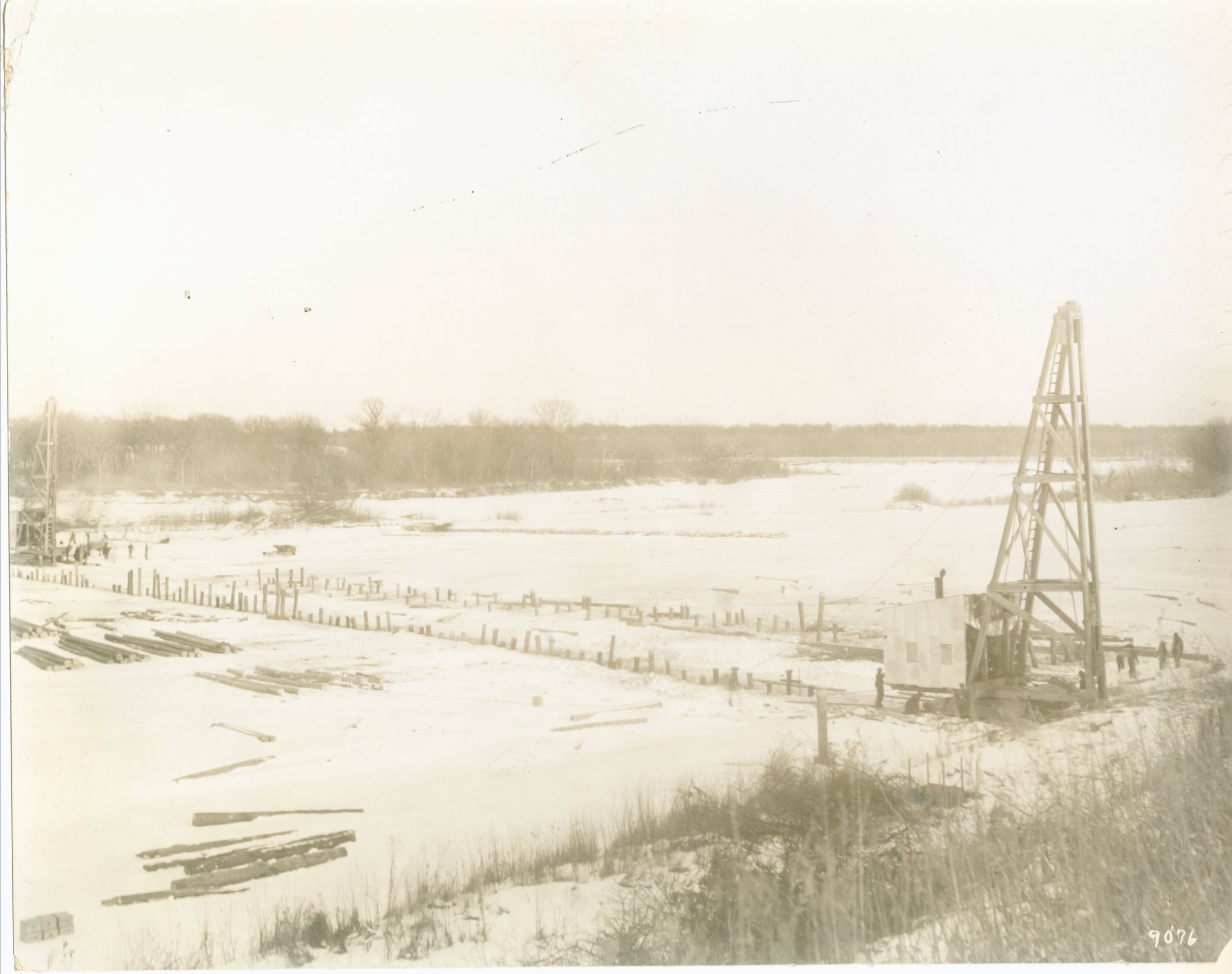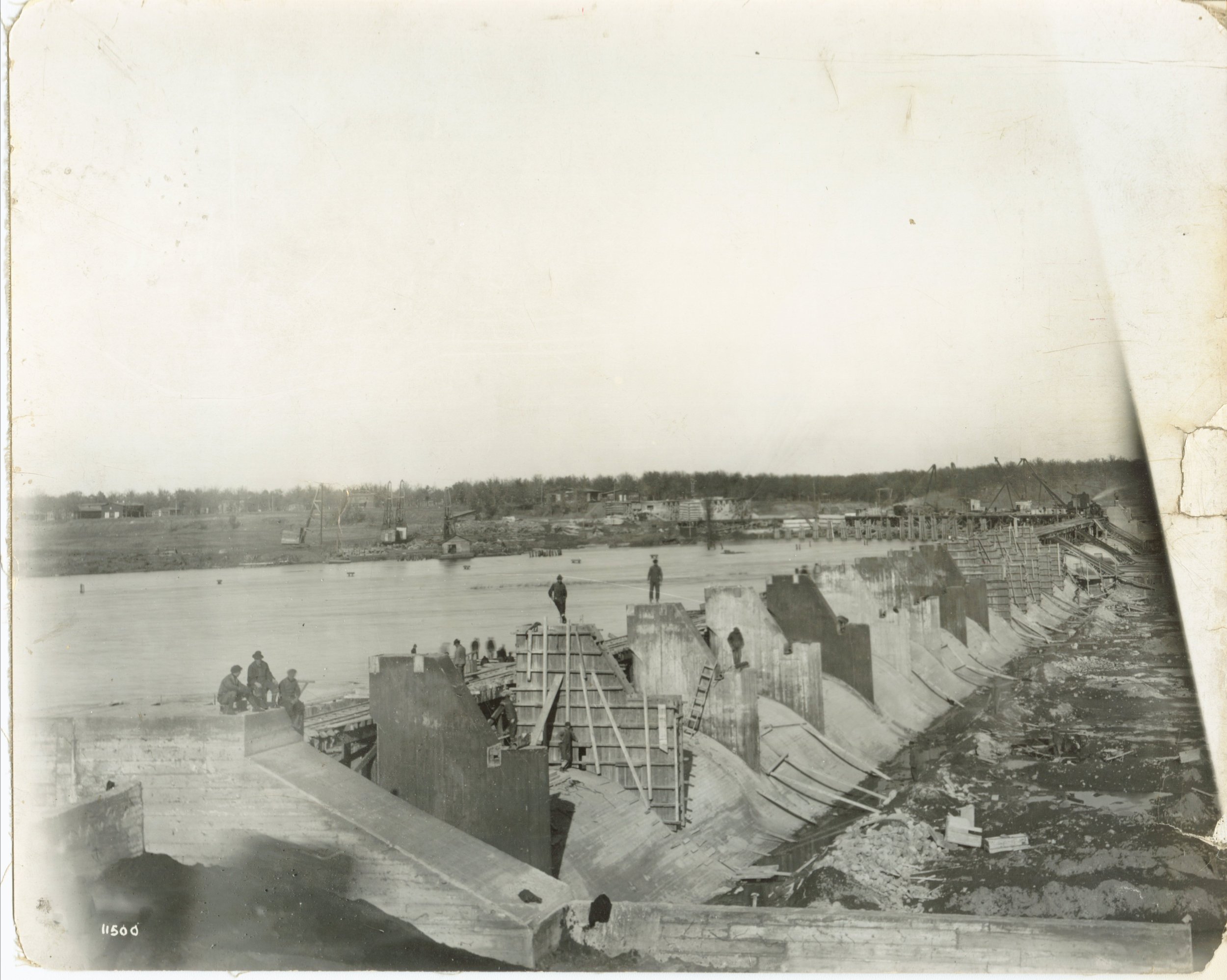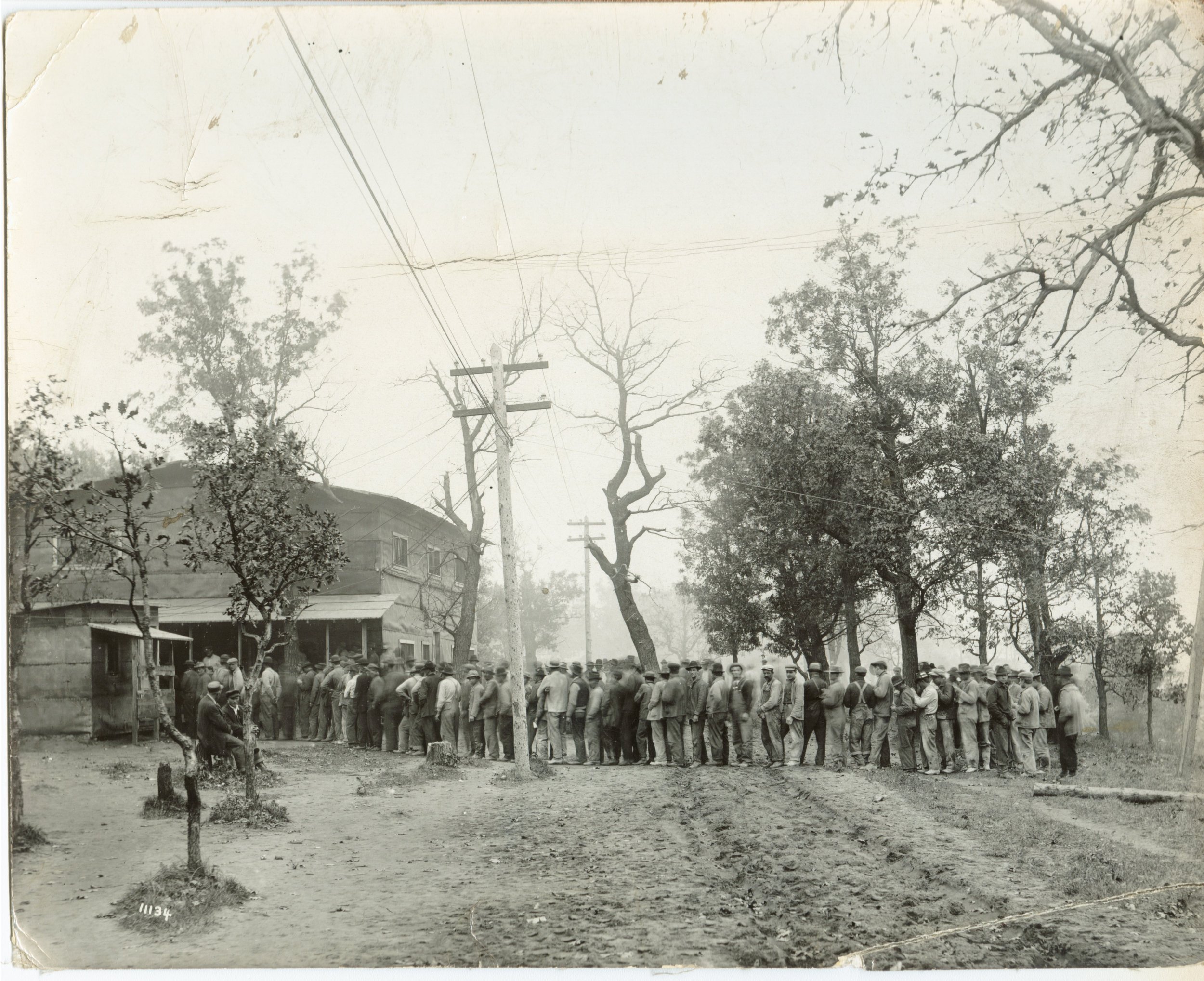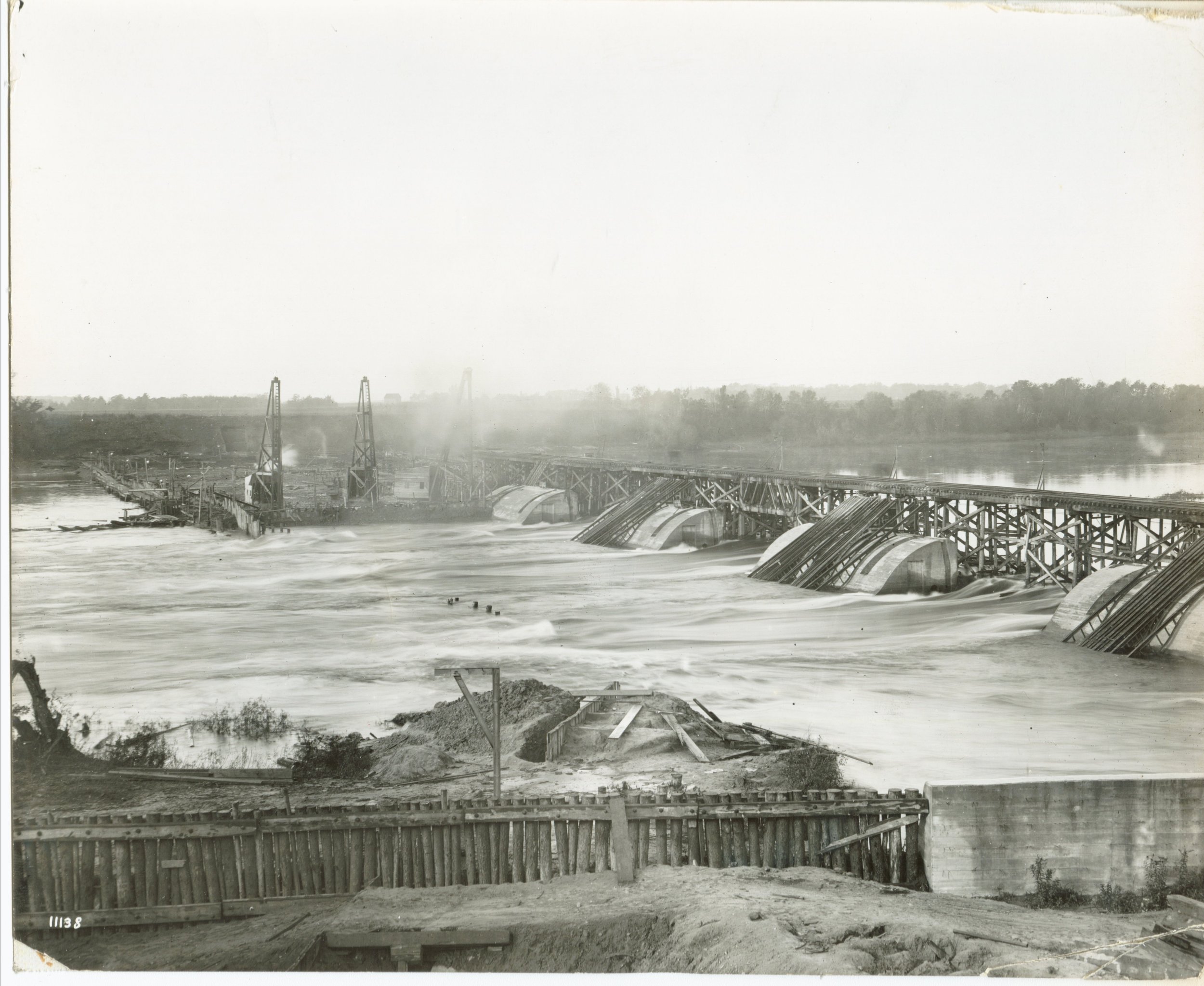History 21 The Podcast - 3.06 Coon Rapids Dam
Construction on the Coon Rapids Dam began December 1912. This episode explores the journey it took to build a dam that spanned nearly half a mile across the Mississippi River. Hear its history as well as the voices of those who worked there in its early years, or lived next to it in one of the remaining seven “dam houses.”
Host Sara Given, ACHS Volunteer Coordinator, and Kassandra Mackenthun, ACHS Collections Manager.






Excerpt from: Coon Rapids — A Fine City by a Dam Site
By Leslie Randels Gillund
Published in 1984 with funding by the City of Coon Rapids and the Minnesota Emergency Employment Development Act under the direction of the Coon Rapids Historical Commission.
While Anoka Township was well recognized in the County, it had minimal identification in the out-state area . With the coming of the railroad in the 1860's and the subsequent naming of "the Coon Creek Cut-off" at Coon Creek, the area gradually came to be called by its most widely known feature. With the proposal to build a dam at the foot of Coon Creek in 1898, the name became more widely used.
The ANOKA HERALD of February 4, 1898, illustrates the first local mention of the dam , "A bill to give the Twin City Transit Company permission to dam the Mississippi River below Coon Rapids passed the House . .. so the big scheme is now not only possible but probable" .
The ultimate question as to the location of the dam became a issue as the Company preferred placing it in Fridley near Rice Creek. Landowners above the proposed site, however, were using their influence to have it built nearer Anoka. "Mr. Dunn at Coon Creek practically holds the key to the situation , as his farm would be damaged more than any other piece of property along the river. If the dam were built below his farm he would lose all his rich bottom lands, some of the finest farming lands in the county, and his valuable clay beds would be seriously damaged. "
Very little activity took place until 1909, but the project was still " very much alive" . In October the following newspaper article appeared : " For the past two years there has been talk of a dam which certain mysterious persons were to construct at Coon Creek Rapids. The matter has been kept very quiet . . . a comparison of deeds filed in Anoka and Hennepin Counties reveal that all land on both sides of the Mississippi River between Anoka and Coon Creek Junction has been purchased by the Great Northern Development Company of Duluth ... only recently did it acquire the last parcels necessary to its plans. The point at which the powerhouse is to be erected is at one of the narrowest portions of the river, and the current is not only swift, but there are rapids known as the Coon Creek Rapid s".
Negotiations with John Dunn were successful and 169 acres were sold for the dam site.
The million dollar plant was to be built on the Anoka side of the river, but Hennepin County was designated to receive the energy. The project was delayed for three years , but by December of 1912 all was resolved and 50 men were hired to begin the project. Three months later a village had developed around the dam site including bunkhouses, mess halls, quarters for officials, a school , a hospital , and even its own sewer system . All the amenities of city life were present including fires, weddings, births, deaths, crime, social events, as well as a 30-branch private telephone exchange.
One thousand men were now at work on a round -the-clock schedule, 75 percent of whom were from Anoka County.
Land , water powers, flowage right s, and a federal permit were acquired by Northern States Power on March 15, 1913. Ten days later it was sold to the Northern Mississippi River Power Company, a subsidiary of NSP which carried out the hydro development . Stewart W. Laird was in charge of the construction . Upon completion of the dam he became superintendent of the plant, a position held for over 25 years .
Work on the dam was nearly completed by December 1913, and only a few men were retained through the winter. The numerous camps, stores , offices , sheds, etc. were sold to W.H . LaPlant of Anoka . The " city " by the river was gone and the engineers, laborers, carpenters, and machinists departed.
When completed , the dam contained 42 ,000 cubic feet of concrete and 800 carloads of crushed rock. The water level behind the dam was raised 15 feet . A force of about 200 men were needed to operate the facility upon completion.
In 1914 wires were strung and the plant was ready to furnish electricity.
The Northern States Power Company purchased all capital stock, asset s, liabilities, and property in April of 1916.
Electrical demands, due to the rapidly developing area of service grew so large that by 1966, operation of the plant was no longer feasible. On the 31 st of December NSP officially discontinued operation of the Coon Rapids Hydro Generating Station , and generating and transmission equipment was removed from the powerhouse.
Ownership of the land and dam was transfer red to the Hennepin County 'Park Reserve District in 1969 to be developed for public park purposes.4 ' The Coon Rapids Dam Regional Park now offers recreation al and educational opportunities for the people of the metropolitan area . Visitors may choose from the many activities such as hiking, boating, fishing, biking, and picnicking. Skiing and showshoeing are also popular winter activities.
In 1977 a walkway was built across the pier points of the dam to the west side. This is a popular spot for " river watchers " both winter and summer.
In 1978 a visitor center was opened which houses offices , a permanent display of the dam 's history, many seasonal displays, as well as live animals for the enjoyment and in formation of the public.
The naturalist staff offer public programs each weekend covering a wide range of topics from edible wild plants to fish fileting. Activities offered are " Catfish Classic " , " Fun Run " , and the tongue-in-cheek "Carp Centennial "
Workers at the Dam
In 1980, an unknown employee at the Coon Rapids Dam park organized a series of interviews with former employees of the Dam in a project working on compiling its history. The tapes were rediscovered during a move at the park years later, and subsequently donated to the ACHS.
Earl Eyrich
Eyrich worked as an electrician for Northern States Power at the Coon Rapids Dam from 1920 to 1967. Interview recorded: June 18, 1980.
Irene McAloney
When McAloney married her husband, Kenneth, in 1928, he had already been working at the Coon Rapids Dam since 1913. He retired from his position there in 1959. Interview recorded: August 5, 1980.
William “Bill” Smith
Smith worked his entire life at the Coon Rapids Dam as an electrical operator, from the age of 23 in 1919 to when he retired in 1960. Interview recorded: June 13, 1980.
Group photo of 12 men, apparently workers at Coon Rapids Dam, ca 1930.
Front row: Oscar Moberg, Bill Smith, W. V. Smith, Kenny McAloney, A. P. Franke
Back row: Lewis Melberg, Duchane, Roy R. Downs, Walter Doty, Rod Smith, Stewart Laird, Harry Laird
Anoka County Library Minute
Further Reading:
Aside from the cleverly worded title, another reason to check out this book is the chronological detailing of over a hundred years of the city’s formation. Multiple aspects are covered, from the building of the dam to the government operations like finance, fire department, parks and more. Illustrations throughout the book help to further give readers a sense of the times.
Coon Rapids Oral History Project by Coon Rapids Historical Commission (977.665 COO)
Read all about the construction of the dam as well as other city lore, such as the moving of WCCO’s transmitter site to the city, or the short-lived era of brickmaking.
The River We Have Wrought: a history of the Upper Mississippi by John O. Anfinson (386.30977 ANF)
Written by a historian from the Mississippi National River and Recreation Area, this book examines how various factors including economics, environment, recreation, and politics have literally shaped the Mississippi River.
Wicked River: the Mississippi when it last ran wild by Lee Sandlin (977 SAN)
This book takes a look at the Mississippi River long before it had locks and dams and became the industrialized pipeline it is today. Rather, this book looks at the somewhat secret history of the river in the early to mid-1800s as an unregulated, raucous wilderness.
The Rivers of Minnesota: recreation, conservation by Thomas F. Waters (977.6 WAT)
This book provides tons of information about many of the major rivers in the state, and from multiple perspectives – geological information, ecological information, etc. The author also explores ways in which people can enjoy these rivers. As a decorated professional in the field of natural resource management, the author also advises on how to enjoy these bodies of water responsibly by offering conservation tips.
Author Tyler Kelley spent two years travelling the Midwest to gather stories from people who rely on rivers for their lives and livelihoods. Their stories highlight the conundrum facing our country: that while the economy and environmental health continue to ebb and flow, the state of our infrastructure – that is our rivers’ levees, locks, and dams – has remained rather stagnant.
Minn of the Mississippi by Holling Clancy Holling (J FICTION HOL)
In this Newberry Honor children’s book, the history and biology of the Mississippi River is recounted by a snapping turtle travelling along it. Sketches accompany the text, which add to the educational richness.
Oh Mighty Mississippi by Melissa Vocelka (E VOC)
A poetically written ode to the wonders of the Mississippi River. Written as a conversation held between the river and various wildlife living in and amongst the river, children will come to understand the river as the living thing it is. Dreamlike paintings of the water and its surroundings add to the sense of wonder.
I Know the River Loves Me / Yo sé que el río me ama by Maya Christina Gonzalez (E460 GON)
Written by a lover of all things rivers, this bilingual picture book for kids illustrates the symbiotic relationship a young child has with her favorite river.
A collaboration of Anoka County Parks Department and Anoka County Library, this collection of park backpacks was created to encourage outdoor recreation, nature appreciation, conservation and creativity. Included in the pack upon checkout is an Anoka County Parks Department parking pass (perfect for visiting the Coon Rapids Dam), leaf rubbing plates, jumbo crayons, bug viewer, field guides for Minnesota birds, trees & wildflowers, and wildlife, and more. Check out or reserve one with your library card.



